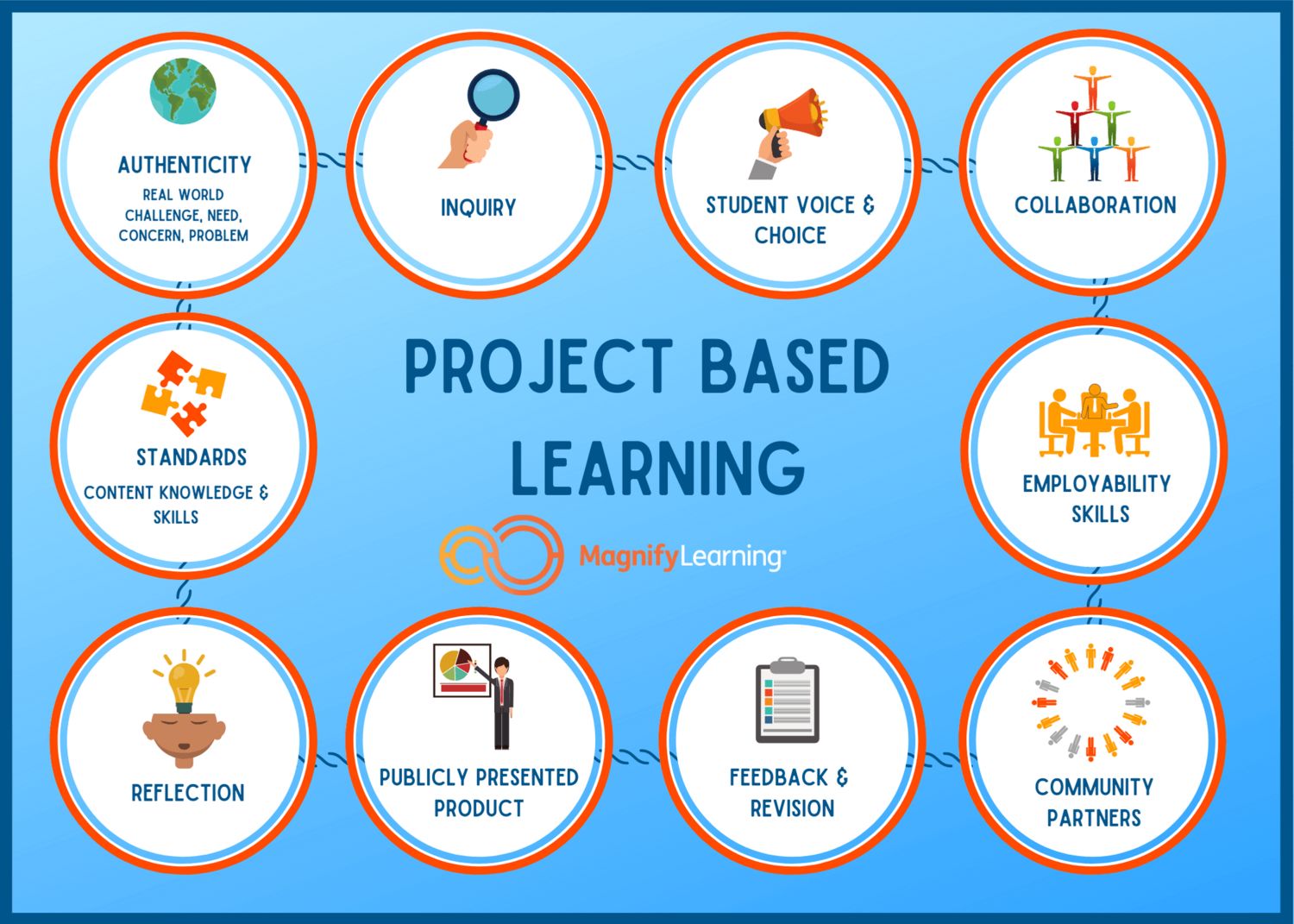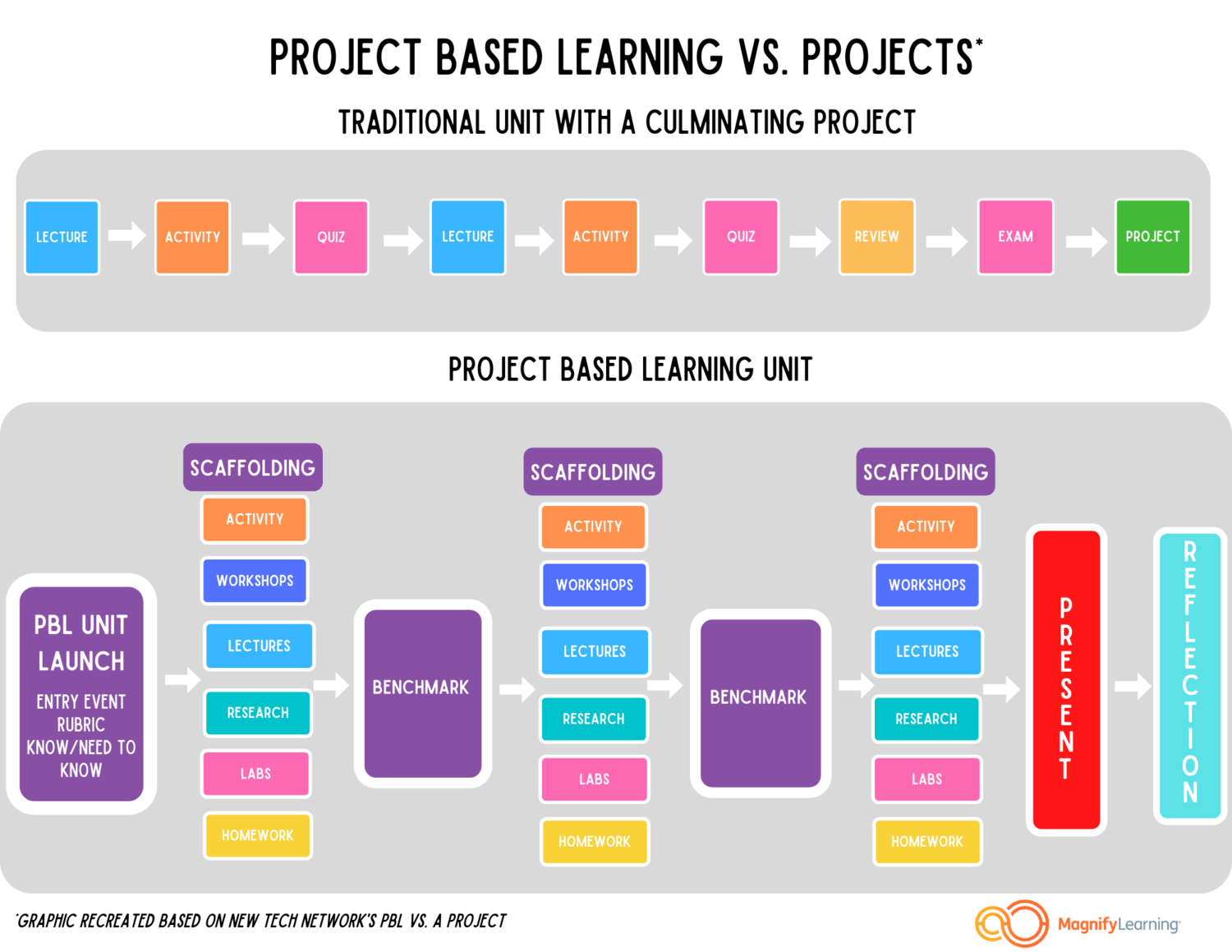- Home
- About
- Academics
- School Life
- Athletics
- Calendars
- Resources
- Get Involved
- Contact
Project Based Learning (PBL) is a model and framework of teaching and learning where students acquire content knowledge and skills in order to answer a driving question based on an authentic problem, need, challenge, or concern.
Project Based Learning is done collaboratively and within groups, using a variety of employability skills such as critical thinking, communication, and creativity.
PBL incorporates student voice and choice as well as inquiry.
Authentic PBL involves a community partner and a publicly presented end product.
Project Based Learning involves an ongoing process of feedback and revision as well as reflection.

The primary differences between PBL and traditional projects lie in the process of implementation and the application of standards. A PBL Unit gives students a clear “why” from the start, whereas traditional units give their “why” at the end with a culminating project. In PBL, an authentic purpose drives student learning. Students then apply their learning throughout the PBL Unit. In a traditional teaching unit, learning takes place but the application is not determined until the end.
